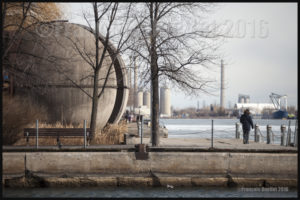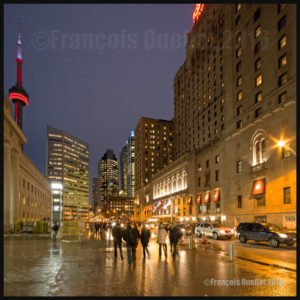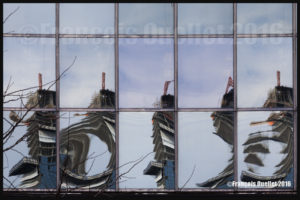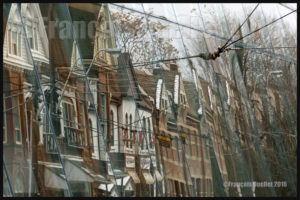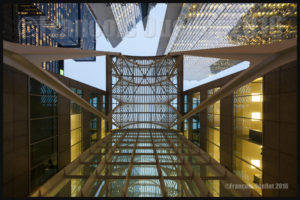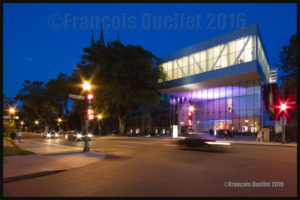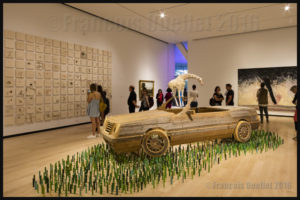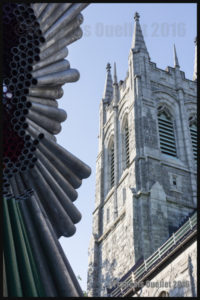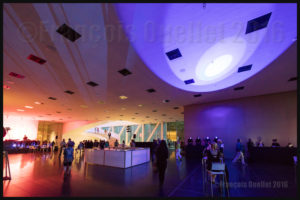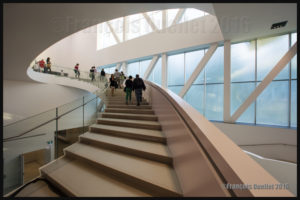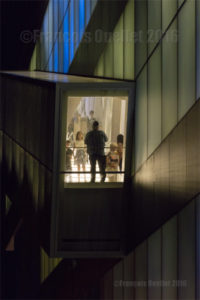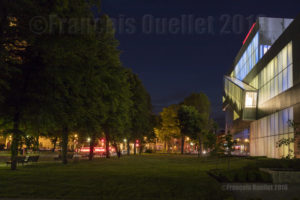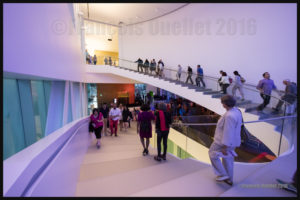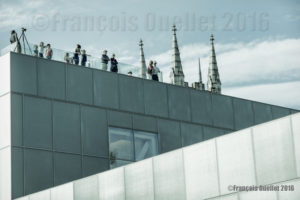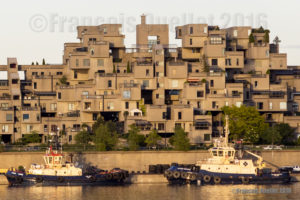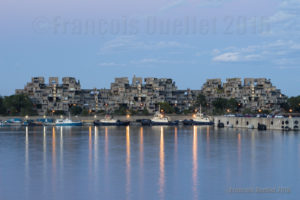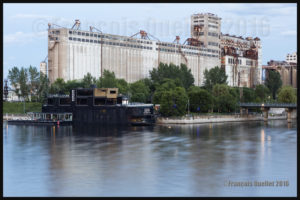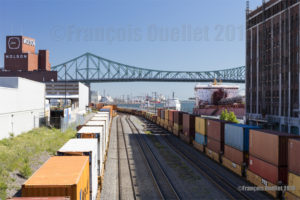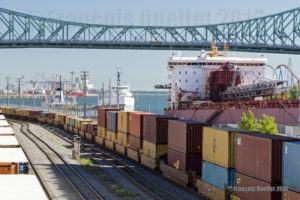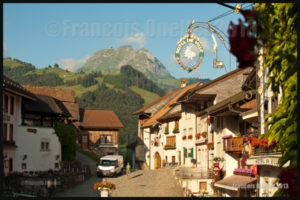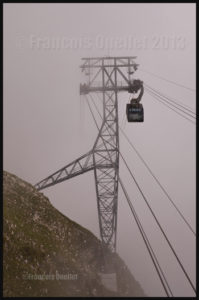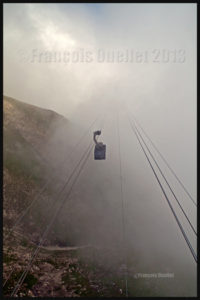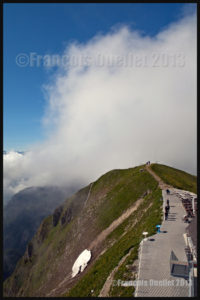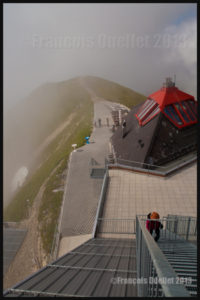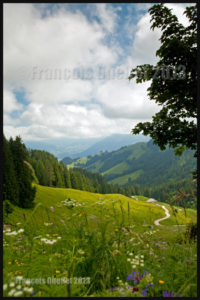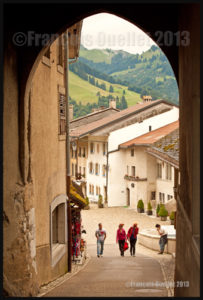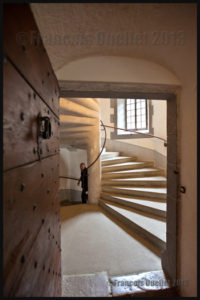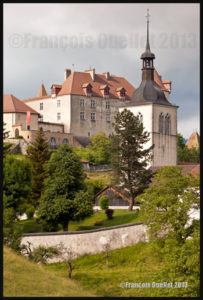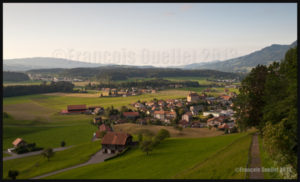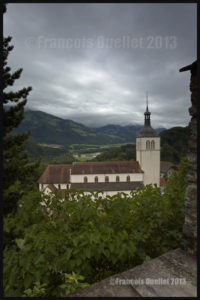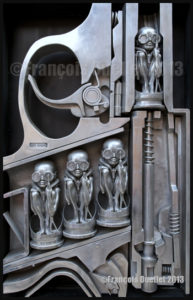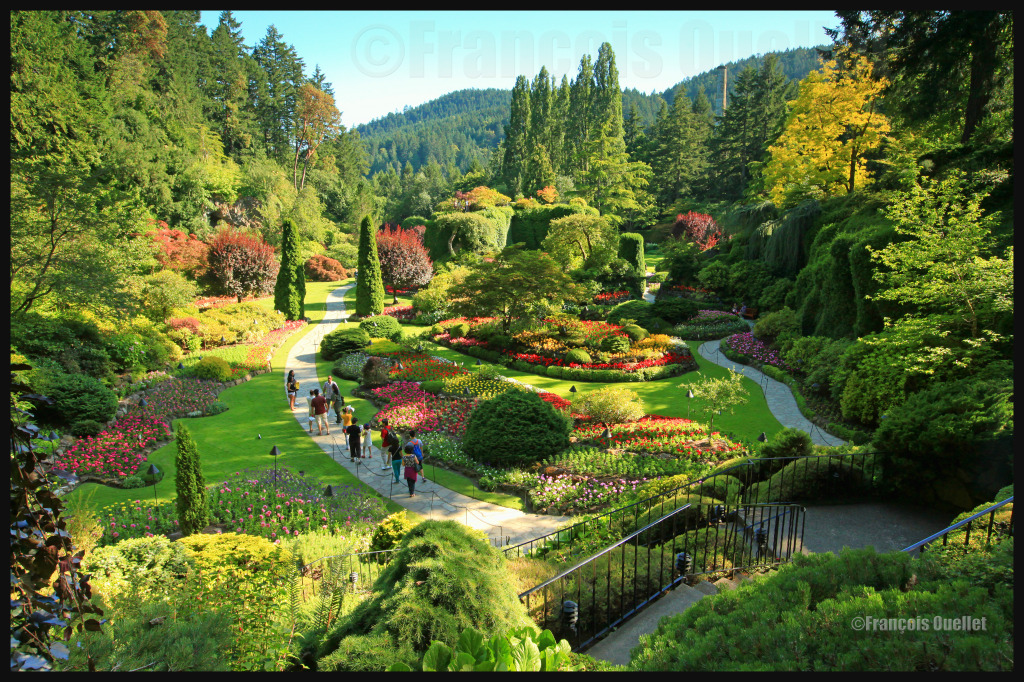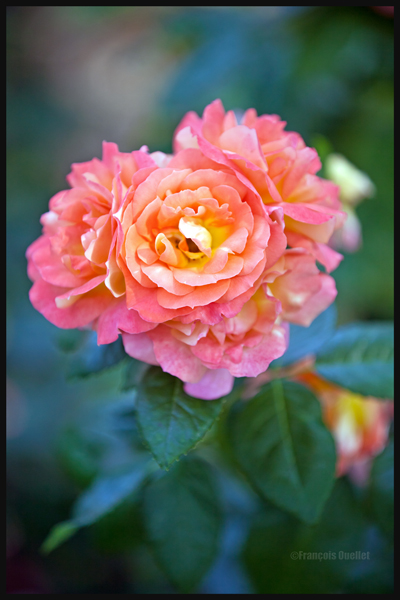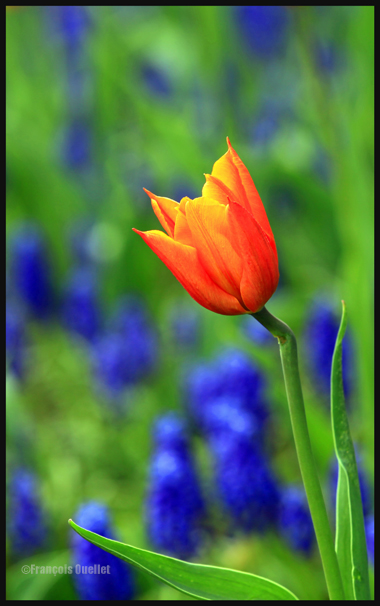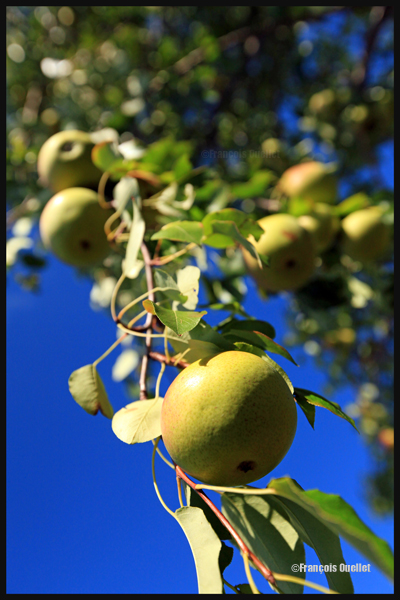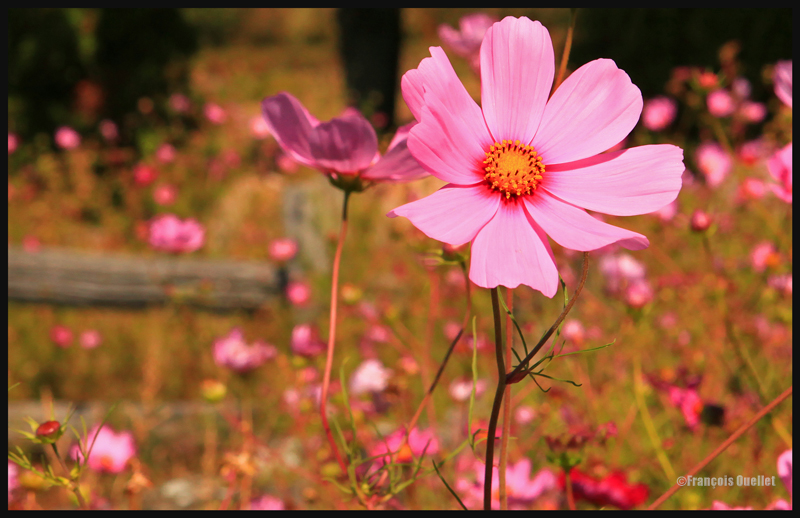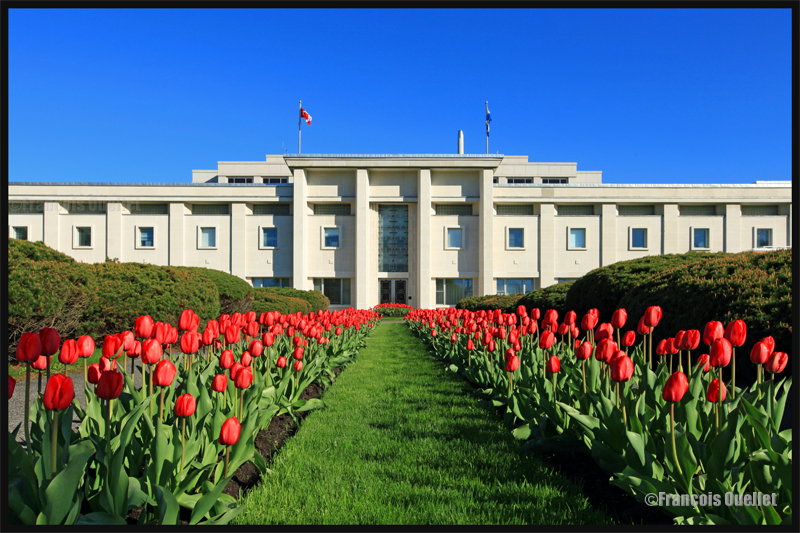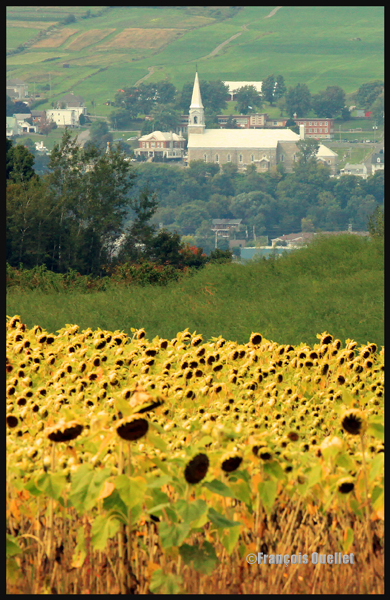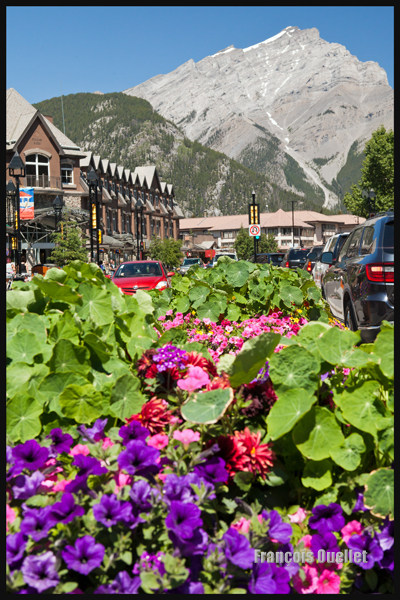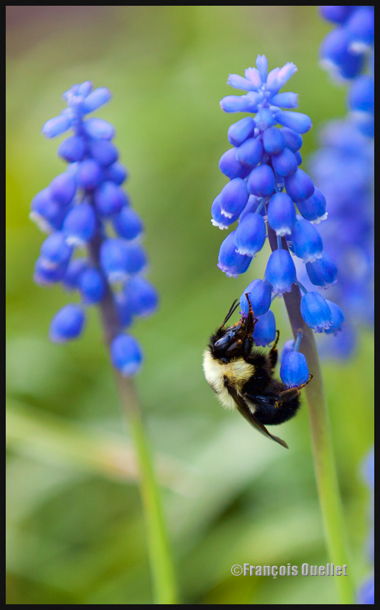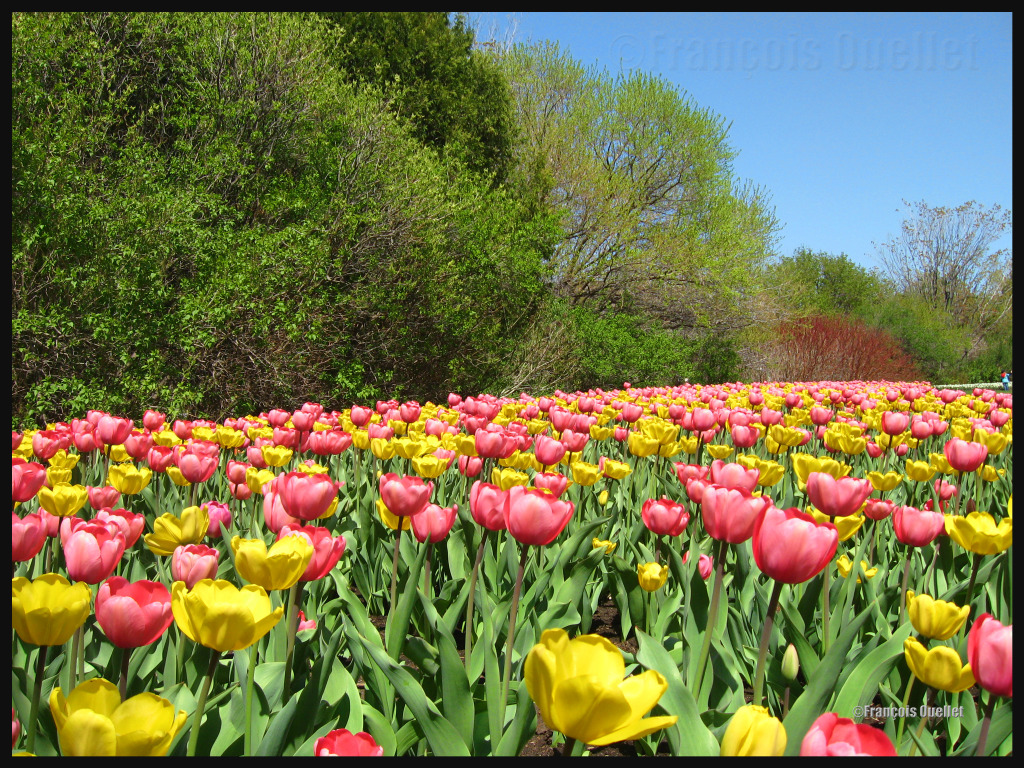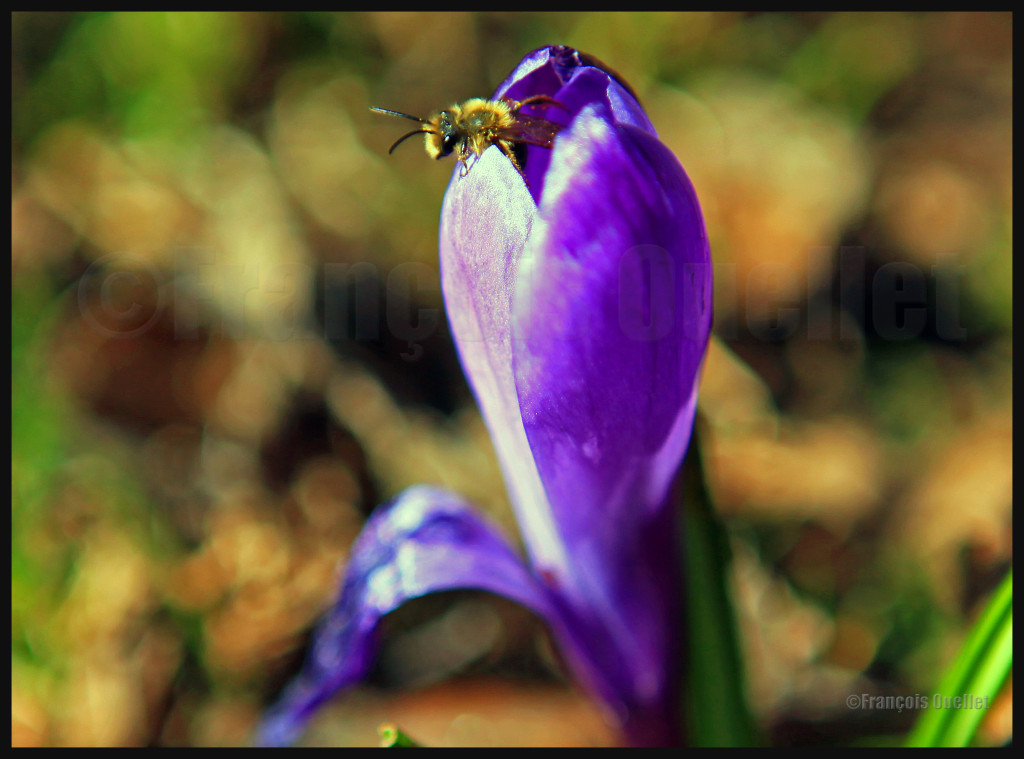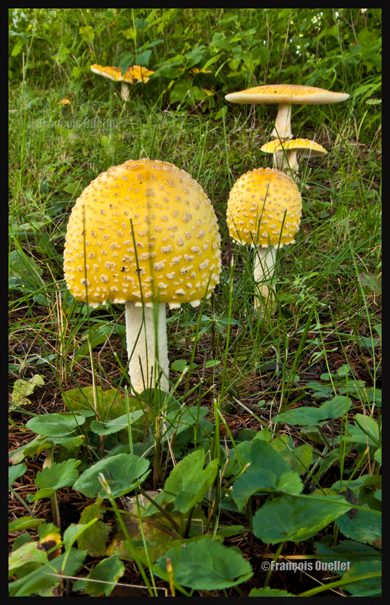Here are some photos of Toronto that were taken in February 2016 with a Canon 5D MKII DSLR camera. The photos were all saved in RAW and JPEG files to facilitate any additional work that could have been required with an image editing software.
Architecture and photography both offering unlimited possibilities, I did not impose any limitations. The primary goal was to profit from any opportunity that would arise while profiting from the softer light offered by the winter season.
The first article with regards to photography in Toronto that was published on my website showed only one subject: the CN Tower. It was published during Winter 2016:
In the present article, I develop other angles of Toronto which is a city in constant evolution and where you can find multiple styles of architecture. In the picture below, a recent rain shower helped to add unexpected reflections.
Some architectural subjects are naturally imposing. This is the case when all you have to do is look straight ahead, enjoy what you see and immediately try to compose an interesting photo.
A good example is the interesting reflected shapes that can be seen on the windows of a building. I could not help to take the picture below as I was surprised that a windowed building could send back images that were so totally different from each other. I am curious why there is so much distortion between the windows…
Instead of taking pictures of the newly designed Art Gallery of Ontario, I used its reflective properties to capture something a lot older, which was the design of the row of older houses on the other side of the street.
It is also possible to add variety and fun to a photo session by looking for special shapes, angles or contrasts that are not already obvious.
As I was walking downtown, I passed by the Brookfield head office. The architecture of this relatively new building is quite interesting. The architects were able to preserve the facades of older surrounding buildings by integrating them and assigning each one a role inside the new construction, possibly because the city required their protection in case of any new development.
But it is only once I was leaving the sky rise that I found the idea for the next photo: a vertical wide-angle shot from which all lines would be straight, all this possible by using the advantages of the Canon 5D MKII full frame sensor coupled to a Canon 14mm 2.8L wide-angle fixed lens. Image sharpness was insured through manual focus, a tripod, a remote trigger and the mirror lock-up function.
The last photo is essentially about contrasts: the colour contrasts (light and dark) and the density contrasts that one can find in different constructions of Toronto.
In the foreground, we see the aquarium, with its pale and inviting colours, as well as lots of space where only few people are visible. In the background, there is the exact opposite, with very dark high-density condo towers, very close to each other, where every inhabitant hopes to have an interesting view on the Lake Ontario. All this in a photo divided in two parts and cropped very tightly to increase the differences and eliminate any visual distractions.
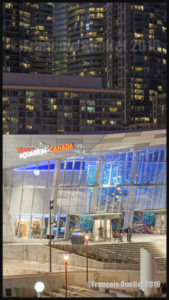
For more articles in the category « Photos of Canada », click on the following link : Photos of Canada
